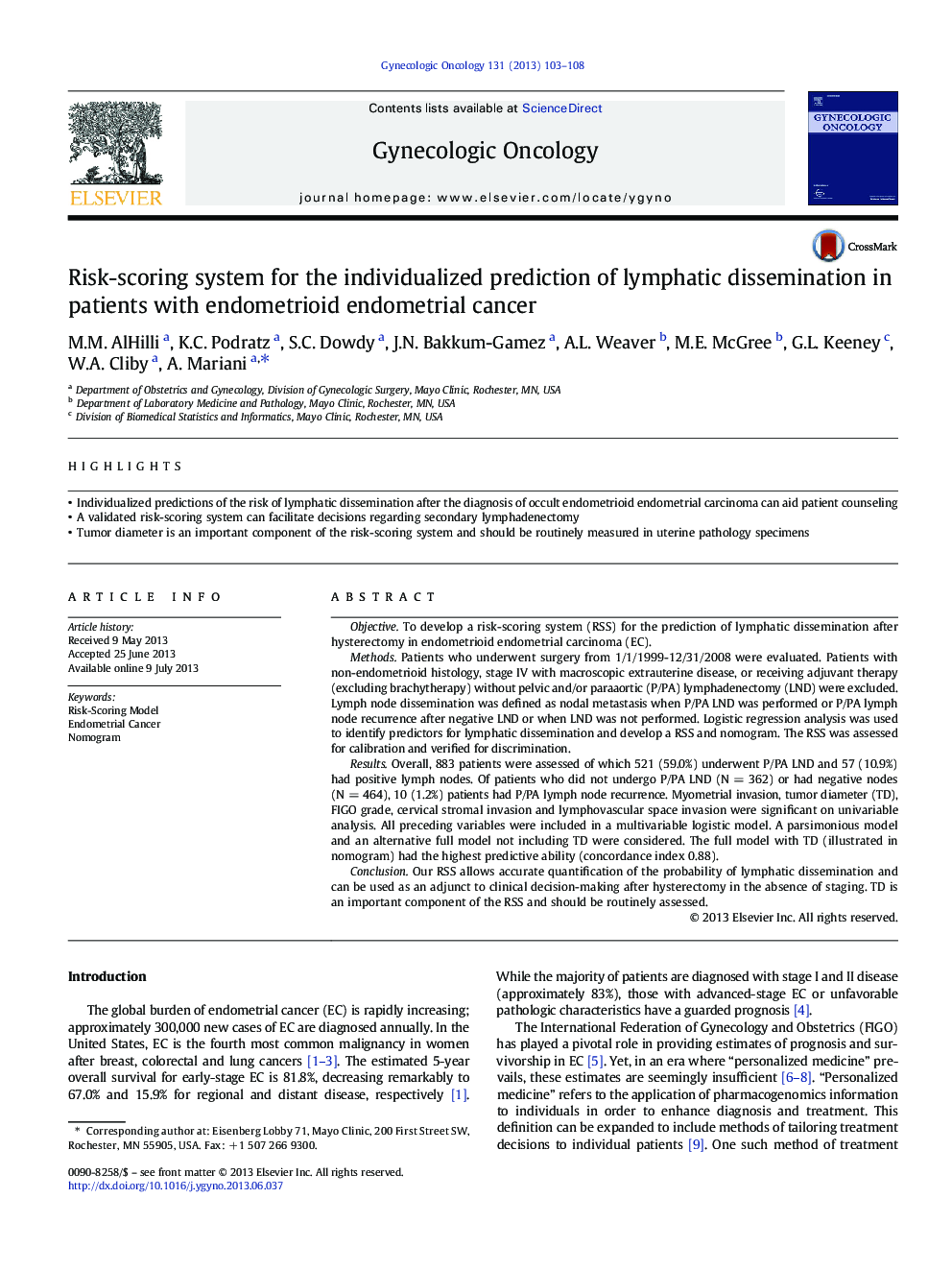| Article ID | Journal | Published Year | Pages | File Type |
|---|---|---|---|---|
| 6185224 | Gynecologic Oncology | 2013 | 6 Pages |
â¢Individualized predictions of the risk of lymphatic dissemination after the diagnosis of occult endometrioid endometrial carcinoma can aid patient counselingâ¢A validated risk-scoring system can facilitate decisions regarding secondary lymphadenectomyâ¢Tumor diameter is an important component of the risk-scoring system and should be routinely measured in uterine pathology specimens
ObjectiveTo develop a risk-scoring system (RSS) for the prediction of lymphatic dissemination after hysterectomy in endometrioid endometrial carcinoma (EC).MethodsPatients who underwent surgery from 1/1/1999-12/31/2008 were evaluated. Patients with non-endometrioid histology, stage IV with macroscopic extrauterine disease, or receiving adjuvant therapy (excluding brachytherapy) without pelvic and/or paraaortic (P/PA) lymphadenectomy (LND) were excluded. Lymph node dissemination was defined as nodal metastasis when P/PA LND was performed or P/PA lymph node recurrence after negative LND or when LND was not performed. Logistic regression analysis was used to identify predictors for lymphatic dissemination and develop a RSS and nomogram. The RSS was assessed for calibration and verified for discrimination.ResultsOverall, 883 patients were assessed of which 521 (59.0%) underwent P/PA LND and 57 (10.9%) had positive lymph nodes. Of patients who did not undergo P/PA LND (NÂ =Â 362) or had negative nodes (NÂ =Â 464), 10 (1.2%) patients had P/PA lymph node recurrence. Myometrial invasion, tumor diameter (TD), FIGO grade, cervical stromal invasion and lymphovascular space invasion were significant on univariable analysis. All preceding variables were included in a multivariable logistic model. A parsimonious model and an alternative full model not including TD were considered. The full model with TD (illustrated in nomogram) had the highest predictive ability (concordance index 0.88).ConclusionOur RSS allows accurate quantification of the probability of lymphatic dissemination and can be used as an adjunct to clinical decision-making after hysterectomy in the absence of staging. TD is an important component of the RSS and should be routinely assessed.
